- Home
- Parnell Hall
The Underground Man sw-3 Page 18
The Underground Man sw-3 Read online
Page 18
“Yes, I was.”
“When was that?”
“Approximately ten minutes later.”
Dirkson nodded. “Thank you. That’s all.”
Again, Steve Winslow declined to cross-examine.
Next, Dirkson called Phil Kestin of the Emergency Medical Service unit, who testified to responding to the call from the 66th Street Station.
“And what time was it when you arrived?” Dirkson asked.
“Approximately 10:55.”
“And what did you find when you arrived?”
“The police and fire departments were already on the scene. The section of the platform had been cordoned off.”
“What section was that?”
“The north end of the uptown platform.”
“And what did you find there?”
“I found the body of a man.”
“Was he alive?”
“He was not.”
“The man was dead?”
“Yes.”
“How do you know he was dead?”
“I examined him.”
“You yourself?”
“That’s right.”
“How did you make that determination? You felt for a pulse and there was none?”
The witness hesitated, frowned, said, “I determined that there was no heartbeat. But in response to your question, I think I have to explain my answer.”
“Certainly,” Dirkson said. “Please explain to the jury in your own words, how you determined the man was dead.”
The medic turned to the jury. He was a young man, with a boyish, open face. His manner radiated sincerity. From Dirkson’s point of view, he was a good witness.
“What you have to understand,” he said, “is the extent of the injuries. The body had been badly burned. It had not just been burned. It had been charred. It was barely recognizable as that of a human being. So to feel for a pulse under those circumstances-well, the question is not really applicable. I determined that there was no heartbeat. I determined that there was no breath. I determined that there was no life. But frankly, one look was enough to see that there couldn’t have been.”
It was effective. Steve Winslow watched the faces of the jurors as the young medic spoke, and he could see that they were shocked and moved as they drank in the horror of the scene.
Dirkson prolonged the effect by pausing a moment before asking, “And did you take the body to the hospital?”
“No, I did not.”
“Why not? Because you’d already determined the man was dead?”
“No, sir. I didn’t have to make that decision.”
“Why not?”
“Because the medical examiner arrived and took over.”
“Thank you. No further questions.”
Judge Grimes said, “Mr. Winslow?”
“No questions, Your Honor.”
Jeremy Dawson tugged at Steve Winslow’s arm. “Hey man,” he hissed, “aren’t you gonna do anything?”
“Not till it’ll do some good.”
“But-”
“Shhh.”
Dirkson called Robert Oliver of the Crime Scene Unit to the stand. Officer Oliver testified to arriving at the 66th Street Station and processing the crime scene for evidence, which consisted largely of taking pictures.
“And do you have those photographs in court?” Dirkson asked.
“Yes, I do.”
“Would you produce them please?”
“Certainly,” the witness said. He reached in his briefcase and pulled out a file folder of eight-by-ten photographs.
“Object to the pictures,” Jeremy hissed.
“Why?” Steve whispered back.
“They’re gonna piss off the jury.”
“That they are.”
“So object to them.”
“I can’t. They’re legal evidence. They’re admissible.”
“Can’t you even try?”
Steve took a breath. “Look,” he hissed through clenched teeth. “The pictures won’t do you half as much harm as you’re doing yourself by constantly grabbing me by the sleeve and looking like your world just collapsed. Now sit back and shut up. The bottom line is, if we act like we’re afraid to let the jury see those pictures, you might as well change your plea to guilty right now.”
Jeremy glared at Steve, but subsided in his seat.
Judge Grimes, noting the byplay between them, said, “Did Counsel hear the question? The prosecutor has asked that these pictures be marked for identification.”
“May I see them, Your Honor?”
“Certainly,” Dirkson said. He took the pictures, passed them over.
Steve leafed through them. They were truly gruesome. Jeremy, looking at them over Steve’s shoulder, seemed about to say something, but managed to sit still.
Steve handed the pictures back. “No objection, Your Honor. And if the witness will testify that these are indeed the pictures he took, I will stipulate that they may be received in evidence.”
“Very well,” Judge Grimes said. “The photographs may be considered in evidence as People’s Exhibits One A through- what have you got there?” he asked the court reporter, who was marking the photographs.
“One minute,” the court reporter said. “That would be A through K.”
“Fine,” Judge Grimes said. The pictures are now in evidence as People’s Exhibits One A through K.”
“Thank you, Your Honor,” Dirkson said. “With the court’s permission, I would like to show the exhibits to the jury at this time.”
“No objection, Your Honor,” Steve said.
“Very well,” Judge Grimes said. “Bailiff.”
The bailiff took the file of photos, handed them to the first juror, who looked at the top one, pulled it off the stack and passed it along. Within minutes the eleven photos had been spread out and were snaking their way through the twelve jurors and four alternates in the box.
Dirkson watched this with satisfaction. The reaction of the jury was exactly as he had anticipated. Some winced. Some scowled. And by the time they had finished, all of their faces were hard.
When the photographs had been returned, Dirkson again approached the witness.
“Now then,” he said, “did you examine the clothing of the decedent?”
The witness frowned. “Yes and no.”
“What do you mean by that?”
“Well, as you can see by the photographs, the clothing had all but been consumed by fire. I examined what remnants remained.”
“Could you describe them, please?”
“Yes, sir. The decedent had been dressed in a long, heavy overcoat. Most of it had burned away, leaving only the charred outline of the fabric. However, there was a discernible bulge that remained. On investigation it proved to be-or at least at one time had been-a pocket.”
“I see. And was there anything in this pocket?”
“Yes, sir.”
“And what was that?”
“The charred remains of what appeared to be a leather object.”
“And did you retrieve that object?”
“Yes, I did.”
“And identify it?”
“Yes, sir.”
“And what was it?”
“On inspection, it proved to be a wallet.”
“A wallet?”
“Yes.”
“And do you have that wallet here in court?”
“Yes, I do.”
The witness reached into his briefcase again and produced a plastic evidence bag. In it was what might have been a wallet, though it was now impossible to tell.
“I ask that this wallet be marked for identification and received in evidence as People’s Exhibit Two.”
“No objection.”
“So ordered.”
“Now,” Dirkson said. “Did you examine the contents of that wallet?”
“Yes, I did.”
“And what did you find?”
“Several papers too charred to be legible, a
nd a gooey mass of what appeared to be plastic.”
“Referring to the gooey mass of plastic-do you know what that proved to be?”
“Yes, I do.”
“Could you tell us please?”
“Yes, sir. The plastic came from several credit cards, which under the extreme heat had melted and fused together.”
“Were you able to distinguish between the credit cards?”
“In most cases, no. But one in the middle of the pack was not so badly damaged and I was able to separate it from the rest.”
“And what did it prove to be?”
“It was a Visa card.”
“And was the name on the card still legible?”
“Yes, it was.”
“And what was that name?”
“Jack Walsh.”
“Do you have that card here in court?”
“Yes, I do.”
The witness reached in his briefcase, produced another evidence bag holding a credit card.
“I ask that this card be marked for identification and received in evidence as People’s Exhibit Three.”
“No objection.”
“So ordered.”
The court reporter marked the exhibit.
“That’s all,” Dirkson said.
“Mr. Winslow?” Judge Grimes said.
“No questions.”
Jeremy Dawson gave Steve a look, but held his tongue.
Dirkson next called the medical examiner to the stand. A thin, white-haired, bespectacled man, he gave his name as Murray Abraham, cited his rather extensive qualifications, and testified to being summoned to the 66th Street Station on the night of the crime.
“And what time did you get there?” Dirkson asked.
The medical examiner pushed his glasses up on his nose with a long finger. “Eleven-oh-two,” he snapped.
Some of the jurors smiled. After the horrors Dirkson had been dragging them through, they were ready for any relief. The prissy preciseness of the medical examiner was affording them the opportunity, and they were gratefully seizing it.
“I see,” Dirkson said. “And can you tell me what you found there?”
“I found the body of a man.”
“Was he alive?”
“He was dead.”
“You pronounced him dead at the scene?”
“Yes, I did.”
“There was no question in your mind?”
“None at all. Nor would there have been any question in yours. The man was dead.”
“Now listen carefully, Doctor. What was the apparent cause of death?”
“The man had apparently burned to death.”
“I see. Did you make that determination then?”
“Certainly not,” the medical examiner snapped. “You said apparent cause of death, and that is how I answered the question. The man had apparently burned to death.”
“Did you subsequently determine the actual cause of death?”
“Yes, I did.”
“Fine. We’ll get to that in a moment,” Dirkson said. “First, can you tell me what you did at the scene of the crime?”
“Yes. As I said, I made a preliminary examination of the body and pronounced the man dead. I indicated to the officers of the Crime Scene Unit that it was highly likely that the man had met his death by criminal means. Then I waited while the Crime Scene Unit investigated and took photographs, and then ordered the body transferred to the morgue for autopsy.”
“And who performed that autopsy?”
“I did.”
“You performed the autopsy personally?”
“That is correct.”
“And had the decedent met his death by burning?”
“As I’ve already stated, he had not.”
“And did you determine the actual cause of death?”
“Yes, I did. The cause of death was a bullet which had penetrated the back of the skull and lodged itself in the decedent’s brain.”
“A bullet?”
“That’s right.”
“And did you remove this bullet from the brain of the decedent?”
“Yes, I did.”
“I see. And tell me, Doctor, would you know this bullet if you saw it again?”
“Yes, I would.”
Dirkson strode back to the prosecution table, picked up a small evidence bag.
“Your Honor, I ask that this be marked for identification as People’s Exhibit Four.”
When the court reporter had marked the exhibit, Dirkson handed it to the witness.
“Doctor, I hand you a bullet and ask you if you have seen it before?”
The medical examiner took the plastic evidence bag in his hands. He turned it over, examining the bullet.
“Yes, I have.”
“Can you tell us when and where?”
“Yes, sir. That is the bullet I removed that night from the brain of the decedent.”
“And how do you identify the bullet, Doctor?”
The medical examiner held up the plastic bag and pointed. “By my initials, which I scratched on the base of the bullet with a small etching tool.”
Dirkson nodded his approval. “Very good, Doctor. Now then, you’ve stated that this bullet was the cause of death?”
“That’s right.”
“How do you know that? How do you know he died from the bullet wound rather than the burning? Or in other words, how do you know he was first shot and then the body burned, rather than the other way around?”
“I know that from my autopsy. An examination of the body showed that the man was dead before the body was set on fire.”
“Oh really? And how could you tell that?”
“There were several factors, easily recognized by a trained pathologist.” The medical examiner sniffed and said somewhat condescendingly. “I shall point out those most easily understood by a layman. For one thing, live flesh burns differently than dead flesh. Even more conclusive was the condition of the lungs.”
“What about them?”
“There was no smoke in them. And if the man were alive when he was set on fire, there would have to be. He would have inhaled, and smoke would have gotten in the lungs. But he didn’t inhale. Therefore he wasn’t breathing. Therefore he wasn’t alive.”
“I see. So the bullet wound had to come first?”
“That’s what I just said.”
“And was the bullet wound extensive enough to cause death?”
“Absolutely. There was severe trauma to the brain. The man simply could not have lived.”
“Not even for a little while? What I’m getting at, Doctor, is it possible that the bullet merely rendered the man unconscious, put him into a coma, and it was the fire that actually killed him?”
The doctor shook his head impatiently. “A comatose man still breathes. Smoke would have entered the lungs. That didn’t happen.” Dr. Abraham held up one finger. “There is no question. The bullet killed him. The body was dead when it was set on fire.”
Dirkson nodded gravely, as if attaching great weight to the doctor’s remarks. “I see, Doctor. Tell me, did you determine the time of death?”
“I did.”
“And what was the time of death?”
“The decedent met his death between the hours of ten and eleven P.M. on February 26th.”
Dirkson nodded. “Thank you, Doctor. No further questions.”
Judge Grimes looked at the defense table. “Mr. Winslow?”
Steve hesitated just long enough to let the doctor think he was going to get away. Then he rose to his feet. “I have one or two questions, Your Honor.”
Steve stepped out from behind the table and crossed to the witness stand.
The jurors watched with some interest. This was the first witness Steve Winslow had seen fit to cross-examine, which magnified its importance.
“Between the hours of ten and eleven, Doctor?”
“That’s right.”
“That’s a rather precise time frame, isn’t it?”
“Yes, it is.”
“How were you able to be so accurate?”
“Because I saw the body so soon after death. I was on the scene at 11:02. I performed the autopsy shortly after midnight.”
“I see. And when did you determine the time of death? At 11:02 when you first saw the body, or shortly after midnight when you performed your autopsy?”
“When I performed my autopsy, of course.”
“You determined the time of death solely from medical factors?”
“Of course.”
“Well, Doctor, I’m just a layman, but as I recall, one of the factors in determining the time of death is post mortem lividity, is that right?”
“It is, but-”
“Just answer the question, Doctor. Post mortem lividity is one of the factors used in determining the time of death, is that right?”
“Yes.”
“Fine. Now, as I understand post mortem lividity, a dead body has no pulse, therefore after death, the blood stops circulating and tends to gravitate to the lower portions of the body, causing a reddish tinge to appear on the skin. Is that right?”
“Yes, but in this case-”
“In this case that would not be a factor, am I correct? Because it takes time for post mortem lividity to develop and sufficient time had not elapsed, and even if it had, the body was so badly charred the lividity would not have shown. Is that right?”
“Yes,” Dr. Abraham snapped. “That was what I was about to say before you interrupted me.”
“So,” Steve said, “in this case post mortem lividity told you nothing, and was not a factor used in determining the time of death?”
“No, it wasn’t.”
“Then there’s rigor mortis, also used in determining time of death. As I understand it, when the body has been dead for a sufficient time, rigor slowly sets in and the body becomes stiff. Then after sufficient time, rigor leaves the body, and it slowly relaxes again. Is that right?”
“Yes, it is. But-”
“But in this case sufficient time had not elapsed for rigor to even begin to set in, is that right?”
“Yes, it is.”
“So, rigor mortis was not a factor in determining the time of death?”
“No, it wasn’t.”
“I believe another means is by stomach contents. Since digestion ceases when a person is dead, by examining the contents of the stomach and determining how far digestion has progressed, one can determine fairly accurately how soon a person died after eating a particular meal, is that right?”

 Clicker Training
Clicker Training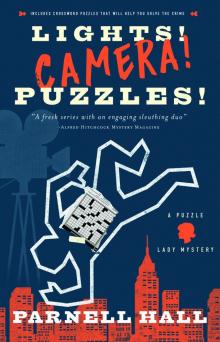 Lights! Camera! Puzzles!
Lights! Camera! Puzzles!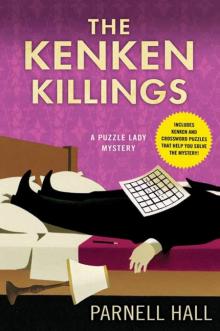 The KenKen Killings
The KenKen Killings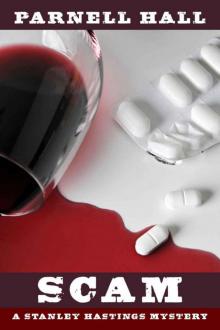 12-Scam
12-Scam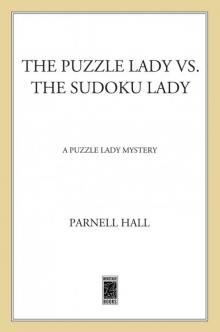 The Puzzle Lady vs. the Sudoku Lady
The Puzzle Lady vs. the Sudoku Lady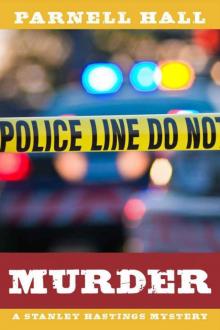 2 Murder
2 Murder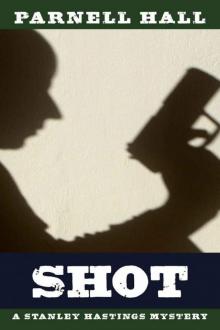 7 Shot
7 Shot You Have the Right to Remain Puzzled
You Have the Right to Remain Puzzled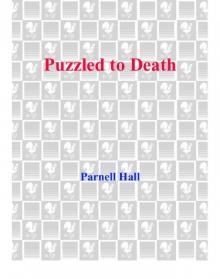 Puzzled to Death
Puzzled to Death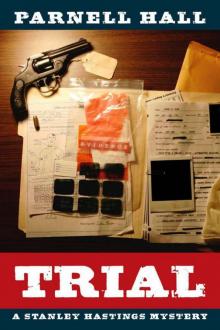 11-Trial
11-Trial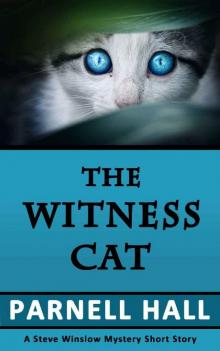 The Witness Cat (Steve Winslow Mystery)
The Witness Cat (Steve Winslow Mystery)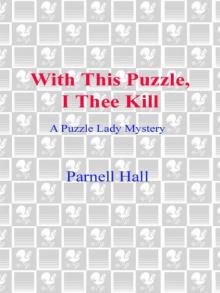 With This Puzzle, I Thee Kill
With This Puzzle, I Thee Kill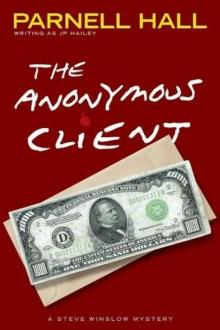 The Anonymous Client sw-2
The Anonymous Client sw-2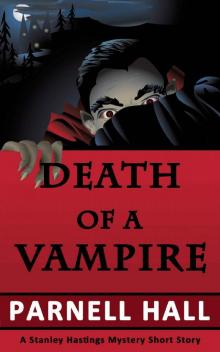 Death of a Vampire (Stanley Hastings Mystery, A Short Story)
Death of a Vampire (Stanley Hastings Mystery, A Short Story)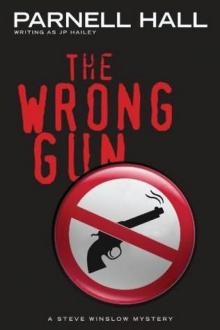 The Wrong Gun sw-5
The Wrong Gun sw-5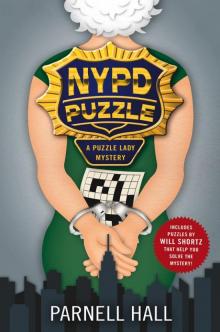 NYPD Puzzle
NYPD Puzzle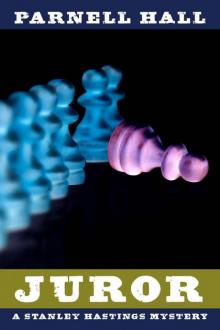 6 Juror
6 Juror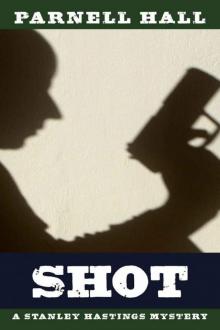 07-Shot
07-Shot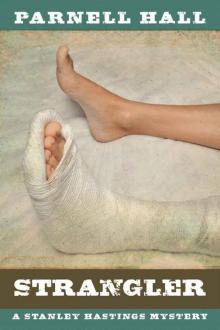 04-Strangler
04-Strangler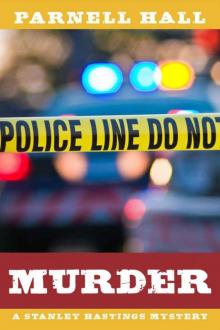 02-Murder
02-Murder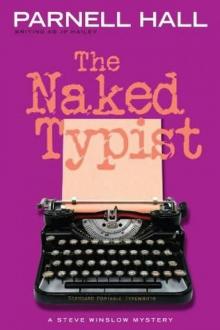 SW04 - The Naked Typist
SW04 - The Naked Typist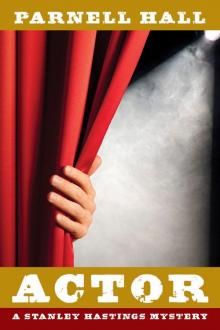 Actor
Actor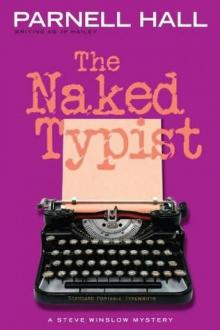 The Naked Typist sw-4
The Naked Typist sw-4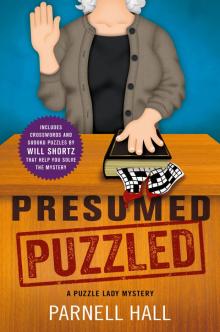 Presumed Puzzled
Presumed Puzzled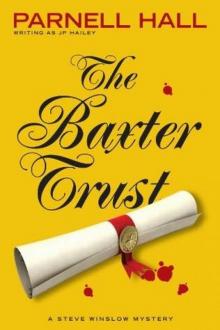 SW01 - The Baxter Trust
SW01 - The Baxter Trust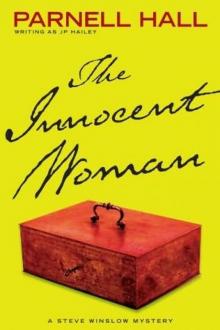 SW06 - The Innocent Woman
SW06 - The Innocent Woman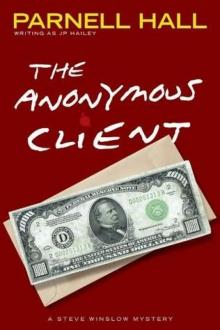 SW02 - The Anonymous Client
SW02 - The Anonymous Client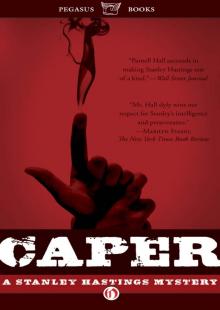 Caper
Caper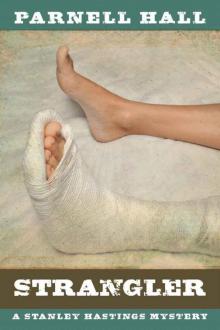 4 Strangler
4 Strangler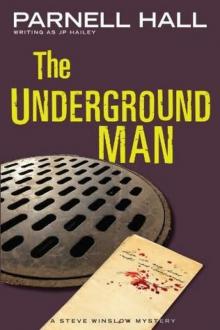 The Underground Man sw-3
The Underground Man sw-3 Manslaughter (Stanley Hastings Mystery, #15)
Manslaughter (Stanley Hastings Mystery, #15)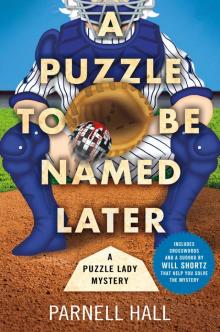 A Puzzle to Be Named Later--A Puzzle Lady Mystery
A Puzzle to Be Named Later--A Puzzle Lady Mystery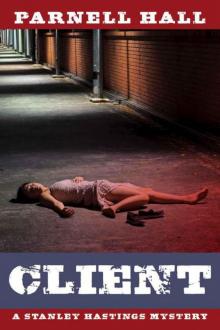 05-Client
05-Client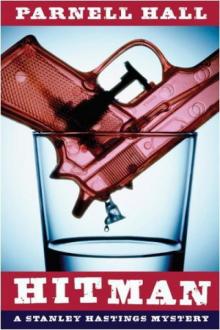 16 Hitman
16 Hitman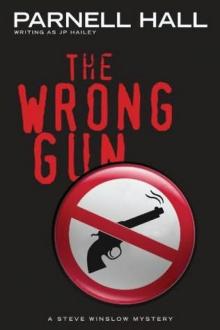 SW05 - The Wrong Gun
SW05 - The Wrong Gun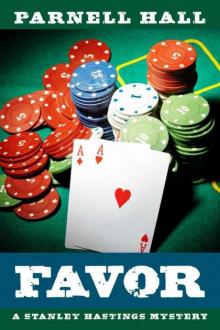 3 Favor
3 Favor Last Puzzle & Testament
Last Puzzle & Testament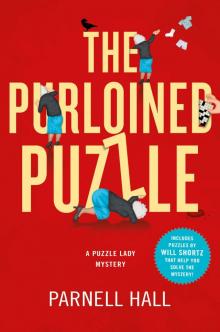 The Purloined Puzzle
The Purloined Puzzle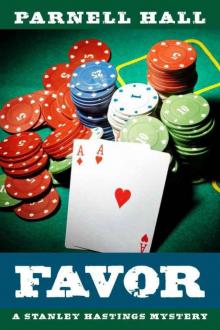 03-Favor
03-Favor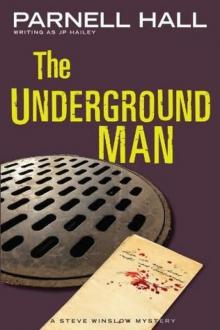 SW03 -The Underground Man
SW03 -The Underground Man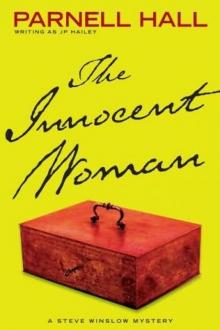 The Innocent Woman sw-6
The Innocent Woman sw-6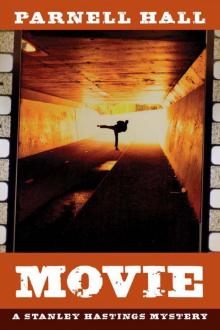 10 Movie
10 Movie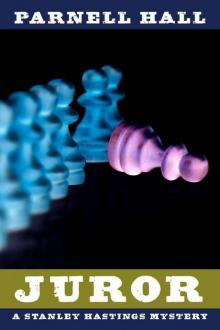 06-Juror
06-Juror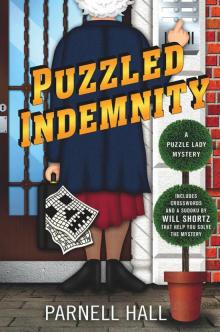 Puzzled Indemnity
Puzzled Indemnity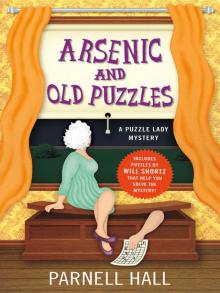 Arsenic and Old Puzzles
Arsenic and Old Puzzles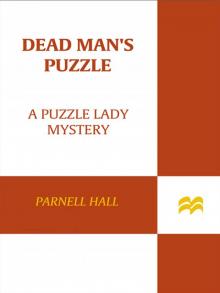 Dead Man's Puzzle
Dead Man's Puzzle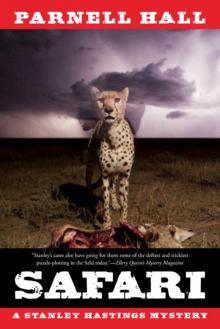 Safari
Safari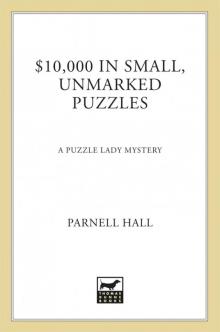 $10,000 in Small, Unmarked Puzzles
$10,000 in Small, Unmarked Puzzles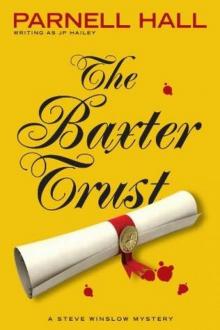 The Baxter Trust sw-1
The Baxter Trust sw-1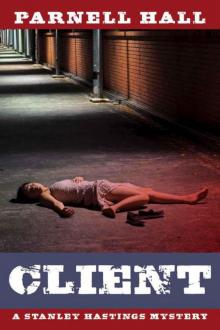 5 Client
5 Client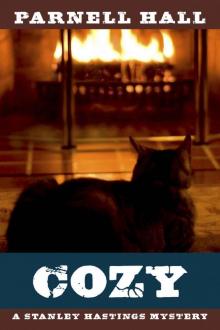 Cozy (Stanley Hastings Mystery, #14)
Cozy (Stanley Hastings Mystery, #14)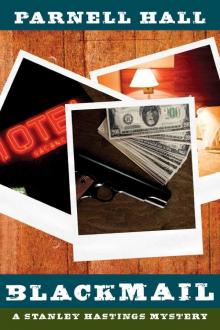 Blackmail
Blackmail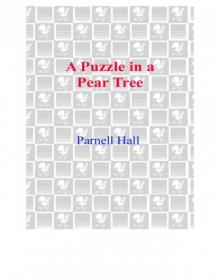 A Puzzle in a Pear Tree
A Puzzle in a Pear Tree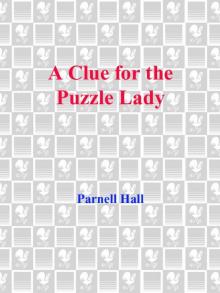 A Clue for the Puzzle Lady
A Clue for the Puzzle Lady Clicker Training (Stanley Hastings Mystery, A Short Story)
Clicker Training (Stanley Hastings Mystery, A Short Story)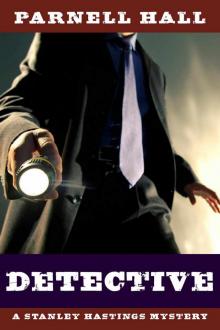 Detective (Stanley Hastings Mystery Book 1)
Detective (Stanley Hastings Mystery Book 1)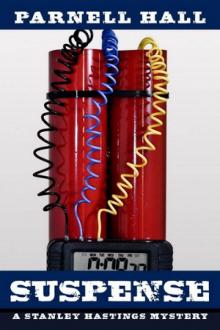 13 Suspense
13 Suspense